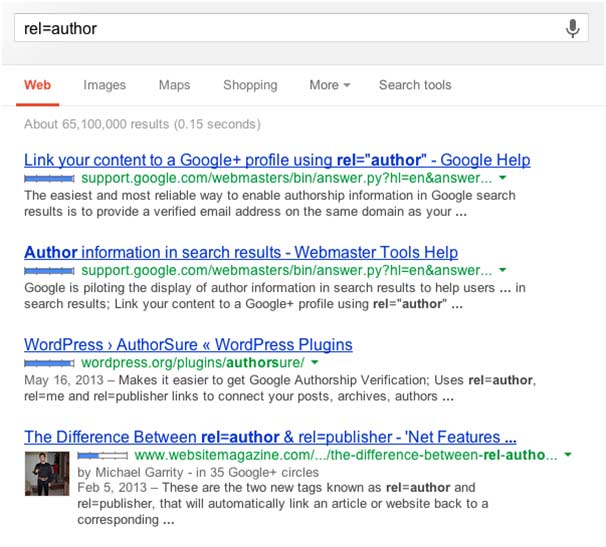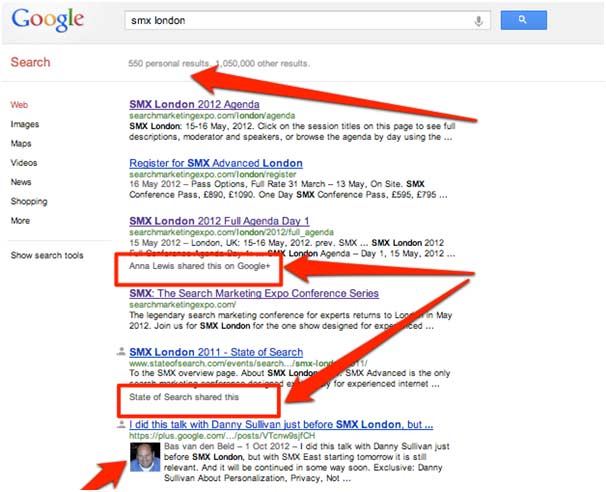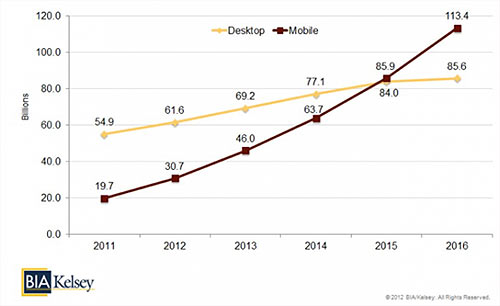 Today’s post is written by Dane Cobain, a creative writer who works in social media for fst.
Today’s post is written by Dane Cobain, a creative writer who works in social media for fst.
How Search and Social are coming together
(and why marketers should care)
It’s no secret that search engine marketing and social media are growing closer and closer together, and it’s not uncommon for marketers who specialise in one to have some sort of grounding in the other.
Back in 2011, Google introduced a beta version of Google+ as an invitation-only social network. Since then, the search-engine giant has repeatedly implemented social data in its search-engine results pages (SERPs), not only from Google+ but also from other giants of the social networking world including Facebook, Twitter and YouTube, the latter of which is owned by Google.
To make matters interesting, consumers are spending more and more time on their mobile devices, with some analysts predicting that mobile searches will outnumber desktop searches by 2015.
So how does Google plan to adapt its algorithms to take in to consideration social signals and the data provided by their own social network’s 343 million active users? For a start, Google+ users are able to use the rel=author tag to connect their blogs and articles to their Google+ ID.
In practical terms, this short implementation allows you to display your Google+ username and profile picture alongside your blogs in Google’s SERPs. While this doesn’t directly influence your rankings, it does increase the click-through rate, with one blog experiencing a 484% increase in the number of click-throughs to the site.
Google takes further data from its social network by dynamically altering SERPs for users who are logged in to their Google+ accounts. Pages that friends have +1ed will appear at the top of SERPs, regardless of whether it would normally rank there or not. Of course, not everyone is active on Google+, but giving people the ability to +1 a page through social sharing icons requires only a quick implementation that will deliver benefits for months and years to come.

Many large companies choose a dedicated figurehead to attribute their blogs to – think of Scott Monty, global head of social media for Ford, who in many ways is the online face of the company. Although Scott blogs on his own website, it drives traffic through to Ford’s site and his thought-leadership has led to him making regular statements on social media on behalf of the company.
Even if content for the corporate blog is ghost-written by a dedicated content creator, it’s often posted under the name of a prominent marketer or even the CEO. On the other hand, some business leaders are making big waves by keeping a blog – Bill Marriott, CEO of Marriott Hotels, regularly blogs on the Marriott site about everything from travel to his meeting with Bill Clinton. Mark Cuban, owner of the Dallas Mavericks, uses his own blog to discuss his thoughts on marketing – he even posted his decision to stop running Facebook advertisements there.
Using the rel=author tag in these instances helps to reinforce that the blog is official and brand-sponsored, building the profile of both the business and the employee – in the case of blogging CEOs, the line between the business and the figurehead is a fine one, to say the least.

It’s not just Google+ that the world’s most popular search engine uses to generate results, though – it’s been observed that social is the new link, and Matt Cutts (Google’s head of webspam) has confirmed that data from other social sites is taken into consideration. In fact, search engines grow suspicious if your website has a lot of inbound links but no social buzz.
There’s also blogging to think about, and it’s one of the key areas where the line between social media and SEO begins to blur. Many social media professionals, myself included, are more comfortable with creating content than their SEO brethren, and a successful blogger outreach campaign is best carried out with the combined efforts of an SEO and social media team.
While a good blog provides great content for social media, it also provides fantastic content for the search engines – while it’s a mistake to optimise blog posts for search engines as opposed to for human visitors, writing with both in mind will quickly generate results. In fact, according to the marketing experts at HubSpot, 57% of businesses have acquired a customer through their blog, and companies that blog get 55% more traffic.
Regardless of whether we’re talking about Facebook and Twitter, Google and Bing or even Foursquare and Waze, it’s clear that SoLoMo (‘Social, Local, Mobile’) and search are paving the way for a more integrated relationship between search and social media.
Even the lumbering behemoth of Yahoo is getting in to the game with its recent $1 billion acquisition of Tumblr, the social blogging platform that’s grown rapidly since its launch in 2007.
Tumblr still isn’t profitable, despite hosting over 100 million blogs and serving over 215 million visitors per month, and although Marissa Meyer has already announced plans to run more ads on the social network, the purchase could be less of an earner and more of a key strategic decision to play catch-up with Yahoo’s arch-rivals at Google.
How do you see search and social media coming together in 2013 and beyond? Let me know with a comment!
Dane Cobain is a social media specialist for UK-based creative agency fst the Group. He’s also a gadget-lover and tech fanatic, as well as an internet addict.
Lucy is Editor at Corporate Eye



